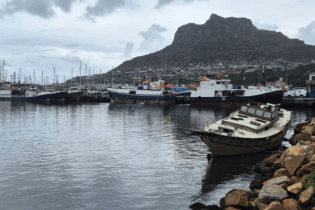Click here to download the full Tripartite Free Trade Agreement impact analysis
Since its establishment in 2009, TradeMark Southern Africa (TMSA) has supported the Tripartite of the Common Market for Eastern and Southern Africa (COMESA), the Southern Africa Development Community (SADC) and the East African Africa Community (EAC), in developing and implementing its regional integration agenda. In the area of market integration, support has focused on the establishment of a Tripartite Free Trade Agreement (T-FTA) consisting of the 26 countries of COMESA, EAC and SADC. These countries make up half of the African Union in terms of membership and currently contribute 58% of its total GDP, estimated at approximately USD 1 Trillion. The Free Trade Area will allow each of the countries belonging to the Tripartite to have preferential market access for goods originating from it into the other country’s market at tariff rates that are lower than those charged to the rest of the world. As part of its support for establishing a T-FTA, TMSA has commissioned an impact analysis to determine potential economy-wide impacts of what will be Africa’s largest free trade agreement. The study was undertaken by Dr Dirk Willenböckel from the Institute of Development Studies at the University of Sussex. It is intended to stimulate discussions within the Tripartite region among different stakeholders on regional and national level and thereby to help inform policy choices on trade integration. TMSA released the report of the study “General Equilibrium Analysis of the COMESA-EAC-SADC Tripartite FTA” at an event of the TMSA “Regional Integration Research Network” – held in Gaborone, Botswana on 30 October 2013. The event on the T-FTA was attended by participants from the private sector, civil society and development partners. Lively discussions ensued on (i) simulation scenario assumptions, especially on analysing relaxation of restrictive rule of origin; using a less conservative assumption for the trade facilitation scenario, given that the private sector is anticipating significant gains from Tripartite cooperation on trade and transport facilitation; and (ii) potential policy measures to deal with winners and losers, as well as supplementary measures to facilitate small-scale trade and deal with the resolution of non-tariff barriers to trade. The impact analysis – which can be downloaded here – considers eight T-FTA simulation scenarios. These scenarios differ in their level of ambition in terms of regional coverage, product coverage and trade facilitation effort. The most ambitious scenario includes transaction cost reductions on top of the tariff removals. This scenario aims to capture the potential impacts of non-tariff barrier reduction and other trade facilitation measures that are envisaged to be an integral part of the formation of the Tripartite Free Trade Area (Pearson, 2012). Under the least ambitious scenario, only baseline tariffs with an ad valorem rate of up to 10 per cent are removed completely, whereas tariffs with a higher rate are cut by 50 per cent. Importantly, the study found that all eight trade-liberalization scenarios lead to positive net real income gains for the T-FTA area as a whole, although welfare gains are not equally distributed across countries. The establishment of a T-FTA with complete customs-duty-free trade among all 26 potential partners (scenario S2) is projected to generate an annual welfare gain of US$ 578 million or roughly 0.1 per cent of total T-FTA area 2014 baseline absorption. The strongest message, however, is carried by the most ambitious T-FTA scenario, which combines complete tariff liberalization for intra-TFTA trade with a reduction in non-tariff trade barriers that reduce the costs of cross-border trade within the T-FTA area (scenario S8). Under the stated assumptions the projected aggregate net benefit for the T-FTA group amounts to over US$ 3.3 billion per annum – more than five times the gains resulting from full intra-TFTA tariff liberalization alone.In contrast to some of the other scenarios, all TFTA regions enjoy a positive aggregate welfare gain from scenario S8. The countries with the largest projected percentage increases in real absorption are Zimbabwe (+2.6 per cent), Namibia (+2.4 per cent), Mozambique (+2.2 per cent), Botswana (+1.8 per cent) and Lesotho and Swaziland (+1.5 per cent). The total volume of intra-TFTA trade is boosted by US$ 7.7 billion per annum, an increase of nearly 20 per cent relative to the 2014 baseline volume.
Click here to download the full report: “General Equilibrium Analysis of the COMESA-EAC-SADC Tripartite FTA” More information • Download our free “Trade Negotiation Capacity Building” Training Modules. Over the last six months, TMSA have trained 150 National negotiators from 22 countries in these important skills.• TMSA supports the Tripartite to manage and eliminate Non-Tariff Barriers that make trading in the region difficult and expensive. Click here to visit the Tripartite Non-Tariff Barrier Mechanism – an online portal for reporting, tracking and resolving NTBs – proudly supported by TMSA. About TMSA Trademark Southern Africa (TMSA) is a UKaid supported project that works with the Common Market for Eastern and Southern Africa (COMESA), the East Africa Community (EAC) and the Southern African Development Community (SADC) Tripartite to lower the physical, political and economic barriers that isolate national economies. The purpose of the programme is to improve southern Africa’s trade performance and competitiveness for the benefit of poor women and men. TMSA’s activities address current constraints to trade. By supporting regional collaboration through the enabling environment in the COMESA-EAC-SADC Tripartite area, TMSA is helping African countries to unleash their full potential. For more information about TMSA, please visit our website. Source: TMSA Newsletter
Source URL: http://trademarksa.org/publications/general-equilibrium-analysis-comesa-eac-sadc-tripartite-free-trade-agreement-fta







